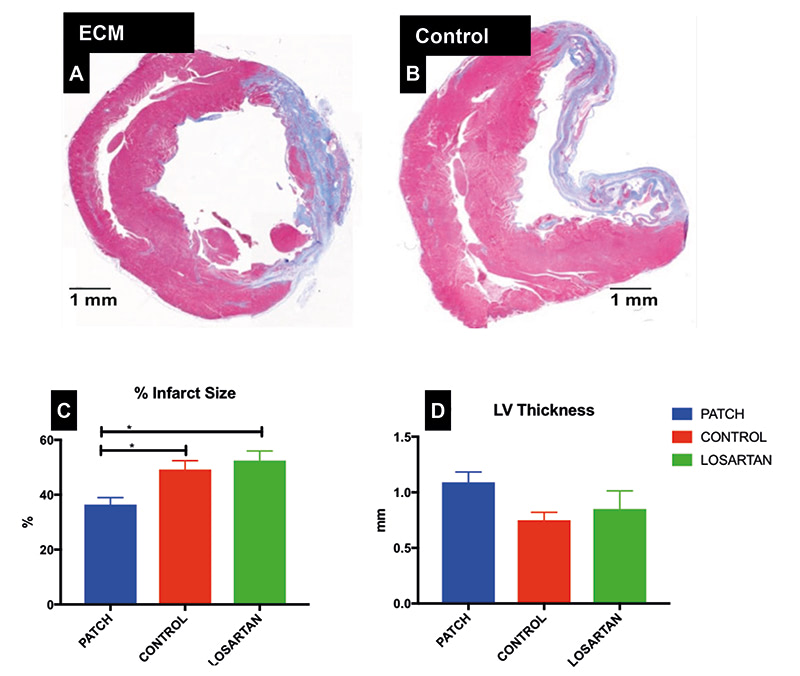
Tissue engineered cardic patch (TECP)
Brief description
Main topic: TECP, development of restrain devices to support cardiac function of patients affected by myocardium infarction. The cardiac restrain devices potentially offer an alternative therapy to the pharmacological and surgical approach or to the adoption of ventricular aided devices (VAD). The general notion of cardiac patching is to provide mechanical support to the ventricle by surgically implanting engineered patch on the infarcted epicardium (local approach) or around the entire ventricle (global). The patch can be made of degradable or non degradable material. The scaffold utilized in this research line is designed to promote endogenous tissue growth and ideally induce regeneration or protection of healthy tissue in proximity of the infarcted region. As such, our approach involves two main strategies: designing polymeric patch able to reproduce the native ventricle mechanics, utilizing a multi-layer composite scaffold where the layer facing the epicardium is composed of bioactive extracellular matrix.
Impact:
The main objective of this research line is the introduction of innovative strategies to mitigate the pathological remodeling induced by myocardium infarction. In spite of the advancement made by pharmacological therapies, surgical treatment or VADs, congestive heart failure (CHF) remains a major cardiovascular disease in terms of epidemiology (2.1% of the US population) and mortality rate.
The biodegradable cardiac restrain devices potentially offer a viable bridge therapy for patients waiting for full heart transplant. A secondary potential application is the ventricle patching to mitigate effects of pulmonary hypertension.
Pipeline
-
CLINICAL
NEED -
DISEASES
ANALYSIS - DISCOVERY
-
PRECLINICAL
VALIDATION -
PRECLINICAL
DEVELOPMENT -
CLINICAL
STUDIES

Principal Investigator
Contact
Therapeutic areas:
Products:
Medical devices & tissue engineering
Collaborations:
- University of Pittsburgh, Pittsburgh, Stati Uniti
- UPMC, Pittsburgh, Stati Uniti
- University of Cincinnati, Cincinnati, Stati Uniti
- IRCCS ISMETT, Palermo, Italia
- Mario Negri, Milano, Italia
- Universidade Estadual de Campinas, Campinas, Brasile
- University of Texas, Austin, Stati Uniti
- Virginia Commonwealth University, Richmond, Stati Uniti
- ATeN Center, Università di Palermo, Italia
Scarica il pdf del progetto
